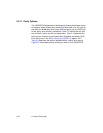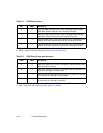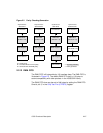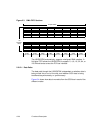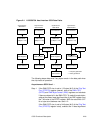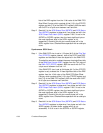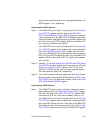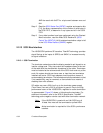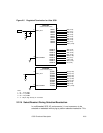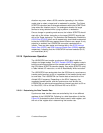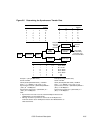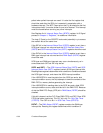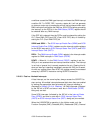
2-32 Functional Description
AND the result with 0x3FF for a byte count between zero and
944.
Step 2. Read the SCSI Status One (SSTAT1) register and examine bits
[7:4], the binary representation of the number of valid bytes in
the SCSI FIFO, to determine if any bytes are left in the SCSI
FIFO.
Step 3. If any wide transfers have been performed using the Chained
Move instruction, read the Wide SCSI Receive bit (SCSI
Control Two (SCNTL2), bit 0) to determine whether a byte is left
in the SCSI Wide Residue (SWIDE) register.
2.2.13 SCSI Bus Interface
The LSI53C875A performs SE transfers. TolerANT technology provides
signal filtering at the inputs of SREQ/ and SACK/ to increase immunity
to signal reflections.
2.2.13.1 SCSI Termination
The terminator networks provide the biasing needed to pull signals to an
inactive voltage level. They also match the impedance seen at the end
of the cable with the characteristic impedance of the cable. Terminators
must be installed at the extreme ends of the SCSI chain and only at the
ends. No system should ever have more or less than two terminators
installed and active. SCSI host adapters should provide a means of
accommodating terminators. The terminators should be socketed, so that
if not needed they may be removed, or there should be a means of
disabling them with software.
SE cables can use a 220
Ω pull-up to the terminator power supply
(Term Power) line and a 330
Ω pull-down to ground. Due to the high
performance nature of the LSI53C875A, regulated or active termination
is recommended. Figure 2.5 shows a Unitrode active terminator. For
additional information, refer to the SCSI-2 Specification. TolerANT
technology active negation can be used with either termination network.
Note
: IftheLSI53C875Aisusedwithan8-bitSCSIbus,all
16 data lines must still be terminated or pulled HIGH.
Note
: Active termination is required for Ultra SCSI synchronous
transfers.



